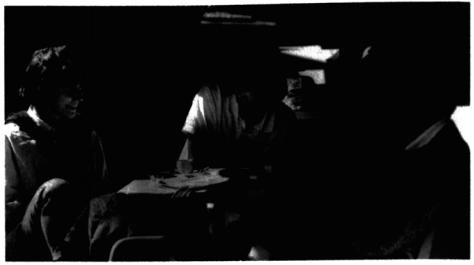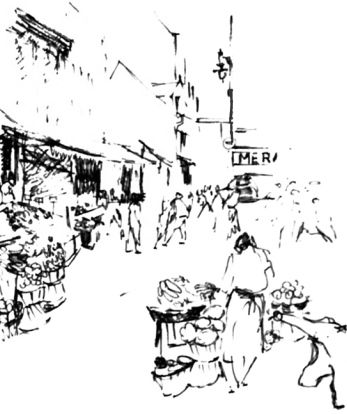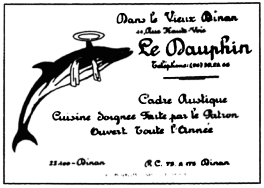3.3: Is there a pen on the desk? / Are there any books on the desk?
- Page ID
- 142297
C. Is there a pen on the desk? / Are there any books on the desk?
- —Y a-t-il un stylo sur le bureau?
- —Oui, il y a un stylo sur le bureau.
- —Il y a des livres sur le bureau?
- —Non, il n'y a pas de livres sur le bureau.
- —Est-ce qu'il y a un médecin dans la salle?
- —Non, il n'y a pas de médecin dans la salle.
- —Il y a du pain dans la cuisine?
- —Oui, il y a du pain dans la cuisine.
- —Il y a de l'eau chaude?
- —Oui, il y a de l'eau chaude
- —Y a-t-il des voitures dans la rue?
- —Oui, il y a des voitures dans la rue.

Figure 3.7. C'est l'anniversaire de mariage de grand-mere et grand-pere.

D. How many pages are there in the book? / How much money is in the bag?
- —Combien de pages y a-t-il dans le livre?
- —Il y a trois cents pages dans le livre.
- —Combien de stylos y a-t-il sur la table?
- —Il y a deux stylos sur la table.
- —Combien de garçons y a-t-il dans la classe?
- —Il y a six garçons dans la classe.
- —Il y a trop de garçons dans la classe.
- —Combien d'argent y a-t-il dans le sac?
- —Il y a beaucoup d'argent dans le sac.
- —Il y a vingt mille1 francs dans le sac.
1 The adjective mille is invariable (no -s ending).
Grammar Notes: Yes, things are beginning to get a bit complicated, but it's all manageable. Once you've gotten used to il y a (20.1) and learned a few of the quantity expressions (2.3.2), and—most important—caught the notion of "count" and "mass" nouns (2.2.3), this will be very easy. Please read the Reference Grammar sections listed in parentheses.

It will help if you note that each question in exercise D can be divided into three meaningful chunks: Combien de pages (how many pages) ... y a-t-il (are there) ... dans le livre? (in the book?).
Countable and noncountable objects to include in this exercise.
Mark each one: C for items you can count; NC for items you cannot count, following the models.
Models: un cahier, des cahiers C / du courage NC /
de l'esprit __ / du papier __ / une carotte, des carottes __ /
de la bière __ / une machine, des machines __ / une bière __ /2
de la viande __ /
2 As you see from its double listing, the word bière can be used to refer either to a countable object as in "a (can of) beer," or as a noncountable object, as in "What'll you have?" → "Beer."

Exercice II
Going to the supermarket versus ordering a meal at a restaurant. In part A, you are going to shop for your family or housemates, whereas in part B, you are ordering items for your immediate consumption. Be prepared to mention at least five items in each part in the class exercise. Use the list provided (and some words you look up if you prefer more variety) and follow the models. We urge you to use quantifiers like "une bouteille de/beaucoup de/une douzaine de."
A. Je vais au supermarché.
Models: Je vais acheter des pommes.
Je vais acheter du café.
B. Je suis dans un restaurant, le commande mon repas.
Models: Je voudrais1 une salade niçoise.
Je vais commander un café.
thé — bière — vin — pomme de terre — pain — bifteck — oeuf —
légume — pèche — poire — fraise — riz — veau — jambon —
poulet — haricot vert — orange — artichaut

1 Note this form, voudrais. It is the conditional tense form of the verb voulent (see verb tables for complete set of forms), and is used, as the conditional is often used in both English and French to "soften" the request, meaning more or less, "I'd like X" instead of "I want X". We'll treat this and other conditional forms as they come up as lexical items rather than as a grammatical question requiring discussion.


